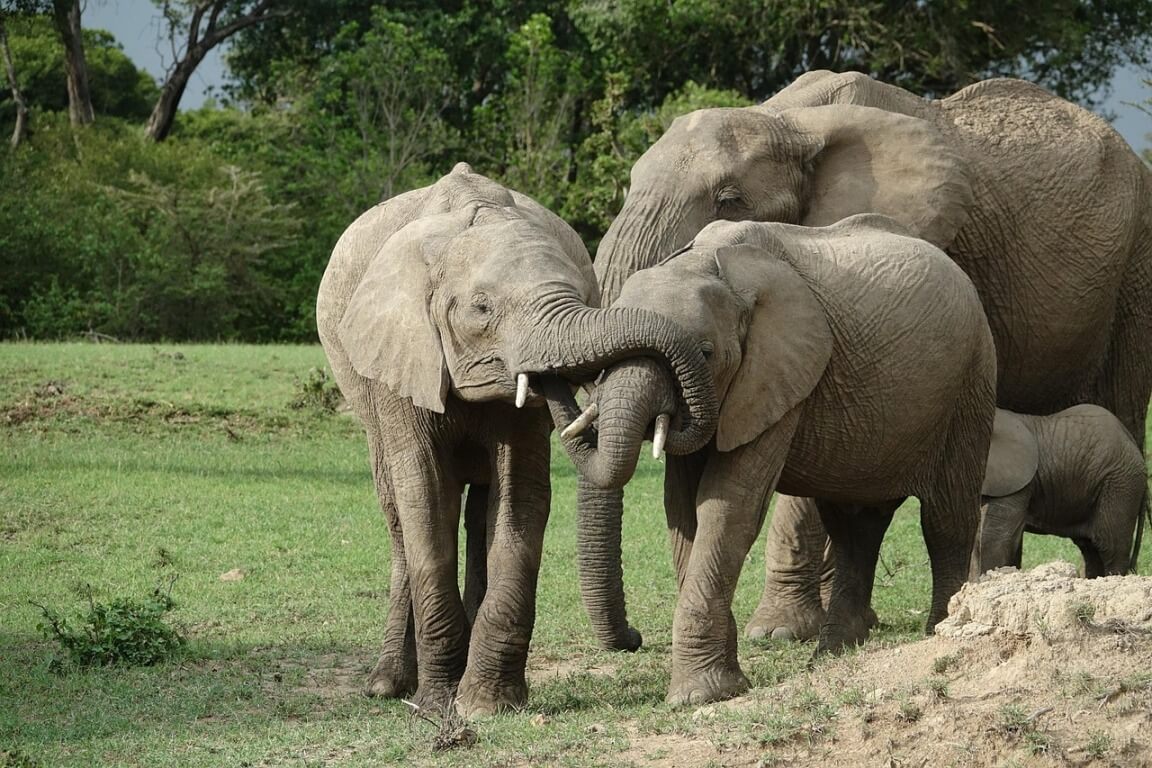What to Pack and Wear for a Safari in the Maasai Mara
Packing for a safari in Kenya’s Maasai Mara isn’t like packing for a regular holiday. Out there on the savannah, you’ll face hot afternoons, chilly mornings, dusty roads, occasional rains, and long hours in open safari vehicles. The clothes and gear you bring will directly affect your comfort, safety, and ability to fully enjoy the adventure.
This guide breaks down exactly what you should pack and wear, with tips for every season, practical advice for solo and group travelers, and sustainability ideas. If you want your safari to be stress-free and memorable, preparation is key. And when you travel with an experienced operator like Pleasant Adventures, much of the guesswork disappears because they guide you every step of the way.
Why Packing Right Matters
The Maasai Mara’s beauty is legendary — wide open plains, incredible wildlife, dramatic sunsets, and vibrant Maasai culture. But conditions can be unpredictable. Daytime temperatures soar, nights get surprisingly cold, sudden rains can turn tracks muddy, and dust can cover everything in minutes.
Packing the right clothing, footwear, and gear will:
- Protect you from sun, insects, and weather extremes.
- Keep you comfortable during long drives or walks.
- Allow you to focus on wildlife and culture instead of small inconveniences.
- Prevent overpacking, which is important since safari vehicles and small planes often have strict weight limits.
Understanding the Climate and Terrain
The Maasai Mara sits at an altitude of about 1,500–2,200 meters, which means temperatures can swing widely. Days are often warm or hot, but early mornings and nights are cool, even cold in some seasons.
- Dry seasons (July–October and December–February): Hot sunny days, cool mornings and nights, dusty terrain.
- Short rains (November and March): Short, sharp showers, usually in the afternoon; grounds become slippery.
- Long rains (April and May): Heavier, prolonged rains; lush vegetation, mud, and higher humidity.
- Cooler months (June–August): Crisp mornings and evenings, sometimes requiring warm layers.
Knowing these conditions is the first step toward smart packing.
Clothing Essentials for Safari
Neutral Colors
Stick to earthy tones such as beige, khaki, olive green, and brown. Bright colors can startle wildlife, while dark colors like black and navy tend to attract insects, especially tsetse flies.
Tops and Layers
- Short-sleeve shirts: For hot afternoons. Choose breathable, moisture-wicking fabrics.
- Long-sleeve shirts: Useful for sun protection and cooler times of day.
- Warm layers: A fleece or light sweater for early mornings and evenings.
- Thermal tops: Handy if you’re traveling in June, July, or August when mornings are cold.
Bottoms
- Lightweight, quick-dry trousers: Practical for most days. They protect against sunburn, insects, and bush scratches.
- Shorts: Comfortable during hotter days but not ideal for bush walks where protection is needed.
- Convertible trousers: A great compromise since you can switch between shorts and long pants.
Rain Gear
- A light waterproof jacket or poncho is a must during rainy months.
- Packable rain gear is best since it doesn’t take much space.
Headwear
- A wide-brimmed hat or cap protects you from harsh sun.
- A buff or scarf can serve multiple purposes: warmth in the cold, dust protection on game drives, or even a pillow cover.
Underwear and Sleepwear
- Choose breathable, quick-dry fabrics.
- Pack thermals if visiting during the cooler months.
- Comfortable pajamas for cold nights are highly recommended.
Footwear for Safari
Hiking Boots
Sturdy, waterproof boots with ankle support are best if you’ll be walking or traveling during the rainy season. Break them in before your trip to avoid blisters.
Closed-Toe Shoes
For general game drives where you won’t be walking much, comfortable trainers or walking shoes work perfectly.
Sandals or Slip-Ons
These are ideal for relaxing around camp in the evenings. Opt for ones that are lightweight and quick-drying.
Essential Gear and Accessories
A safari is as much about preparation as it is about adventure. These essentials will make your trip smoother:
- Binoculars: A must for spotting wildlife at a distance, especially birds.
- Camera gear: If photography matters to you, bring a camera with a zoom lens (70–300mm or more). Carry spare batteries, chargers, and memory cards.
- Daypack: Compact, durable, and big enough to hold water, sunscreen, and personal items.
- Sunglasses: Protects against glare.
- Dust scarf or buff: Especially useful during dry season drives.
- Hat with chin strap: To prevent it from flying off in open vehicles.
Health, Hygiene, and Personal Care
Safaris are remote, so you won’t always have easy access to pharmacies or shops. Prepare accordingly:
- A basic first-aid kit with antiseptic, plasters, painkillers, and antihistamines.
- Any prescription medicines you require, packed in original containers.
- Anti-malaria medication (consult your doctor before travel).
- Sunscreen (SPF 30 or higher) and SPF lip balm.
- Insect repellent, ideally DEET-based.
- Wet wipes and hand sanitizer for quick freshening up.
- Moisturizer — the sun and wind can be drying.
- Biodegradable toiletries like soap and shampoo to minimize environmental impact.
Technology and Travel Documents
- Passport and visa (if applicable).
- Travel insurance documents (with coverage for medical evacuation).
- Copies or scans of important documents (stored separately from originals).
- Universal plug adapter (Kenya uses Type G sockets).
- Power bank and charging cables for long days away from outlets.
- Flashlight or headlamp with extra batteries for camps that run on solar power.
- Optional extras: an e-reader for downtime, or a portable Wi-Fi hotspot if you need to stay connected.
Snacks, Water, and Extras
While camps usually provide meals, it’s good to carry your own supplies:
- Reusable water bottle or hydration flask.
- Rehydration tablets if you’re prone to dehydration.
- Energy bars, trail mix, nuts, or dried fruit.
- Instant coffee or tea for a personal morning ritual.
Seasonal Adjustments for Packing
Dry Season (July–October and December–February)
- Lightweight, breathable clothes for daytime.
- Fleece or sweater for cold mornings.
- Sunglasses, hat, and sunscreen for harsh sun.
Short Rains (November and March)
- Light rain jacket or poncho.
- Quick-dry clothing.
- Waterproof shoes and a cover for your camera or phone.
Long Rains (April and May)
- Strong waterproof boots.
- Sturdy rain jacket with hood.
- Several pairs of socks and waterproof bags for electronics.
- Strong insect repellent.
Cooler Months (June–August)
- Thermal layers for dawn and dusk.
- Warm sleepwear.
- Gloves, scarf, and warm hat if you’re sensitive to cold.
Sustainable and Ethical Packing
Responsible travel is part of the safari experience. You’ll not only enjoy yourself but also support conservation efforts if you pack consciously.
- Use refillable water bottles and cloth shopping bags.
- Opt for biodegradable toiletries.
- Avoid single-use plastics whenever possible.
- Buy locally made crafts directly from artisans instead of mass-produced souvenirs.
- Respect local customs — for example, dress modestly when visiting Maasai villages and always ask before taking photos.
What Not to Pack
- Heavy perfumes or scented lotions that attract insects.
- High heels or shoes unsuitable for uneven terrain.
- Excessive jewelry, which may be lost or draw unwanted attention.
- Bulky suitcases that won’t fit in safari vehicles or small planes.
- Too many clothes — versatile pieces you can layer are far more practical.
Smart Packing Tips and Luggage Advice
- Choose a soft-sided duffel bag instead of a hard suitcase. It fits more easily into vehicles and small aircraft.
- Keep luggage weight under 15 kg (30–35 lbs) to comply with safari flight limits.
- Roll clothes instead of folding to save space and minimize wrinkles.
- Use compression bags for bulky items like jackets.
- Keep electronics, travel documents, and essentials in your carry-on.
- Protect gear with waterproof pouches or ziplock bags.
Why Booking with Pleasant Adventures Makes Packing Easier
Even the best packing list can feel overwhelming, especially if it’s your first safari. This is where Pleasant Adventures makes the difference.
- Tailored Checklists: They provide personalized packing guides depending on when you travel.
- Season-Specific Advice: Whether you’re visiting in the rains or dry months, they’ll suggest what’s essential.
- Seamless Logistics: With their organized transfers and camps, you won’t have to worry about handling bulky luggage or missing an item.
- Comfortable and Safe: Their guides and vehicles are prepared for all conditions, so you don’t need to overpack.
- Responsible Travel: Pleasant Adventures partners with eco-friendly camps and promotes sustainable tourism.
Final Thoughts
Packing for a Maasai Mara safari doesn’t have to be stressful. With the right clothing, footwear, gear, and health essentials, you’ll be ready to embrace every moment — from watching lions at sunrise to sitting by a campfire under the African stars.
Remember: a safari is about more than what you see; it’s about how you feel while you’re there. And being comfortable, safe, and well-prepared makes the experience unforgettable.
If you’re ready to plan your trip without second-guessing what to bring, book your safari with Pleasant Adventures. Their team ensures you’re not only packed properly but also cared for from the moment you arrive until the day you leave.
Your Maasai Mara adventure awaits — let Pleasant Adventures help you travel smart, light, and worry-free.




